Regular readers of this Substack might remember several posts about Peru from March and April this year. Loyalty to my long-term employer, the BBC, compelled me to pen something for the airwaves too. The piece below was written in early May, soon after my return, and was broadcast on 5 July on From Our Own Correspondent on Radio 4 and the World Service. Here’s the full text, illustrated with photos from the trip. Since then, thank God, we’ve got ourselves a (partly) Peruvian pope. My first thought when I heard that Robert Prevost had been chosen as Pope Leo XIV, was how happy our hosts at the tiny Catholic monastery at Huantar must be.
The strange thing about riding on the back of a big animal, is that all the other animals look at you like you are that big animal, not some measly human. The stray dogs at the edge of the village, who would snarl at you if you arrived on two feet, cower away. The bull behind that big stone wall gazes at you, a little apprehensively, like an equal. Riding on mule-back through villages and up along the higher mountain tracks of the Peruvian Andes, we felt like royalty.
Mule royalty - even if our legs ached in the saddle all day, even if Machi-Pachi, the mule my son nobly surrendered to his aging father, was determined to stop and chew at every juicy clump of grass we passed. Even if it rained every day, though not all day, as we climbed up through the Carhuascancha valley, from 3,200 to 4,200, then 4,500 metres. And we had to collect firewood in the rain, and wash the dishes in freezing rivers, then huddle round the fire to cook a simple repast in all the clothes we’d brought for a three week trip, as the smoke curled up through the long grass roof of the shepherd’s round stone hut.



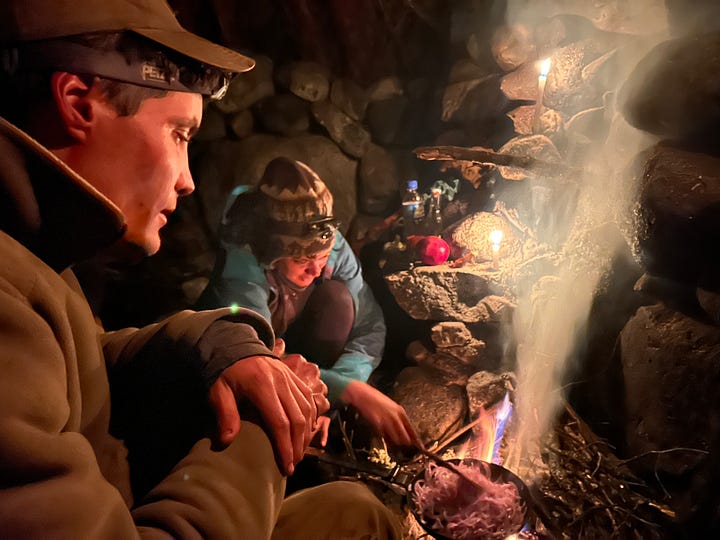
We slept in our tents like well-fed dogs. And on those days when the sun occasionally did flash a smile, even the peak of San Juan, usually invisible in a conclave of clouds at 6,300 metres, put in a brief, shy appearance.

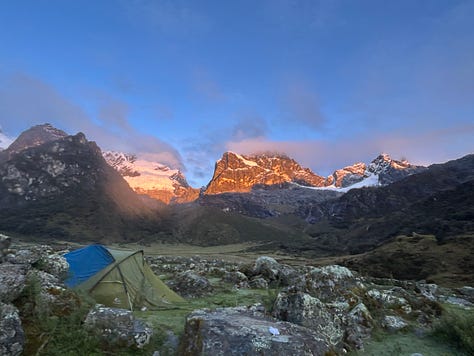
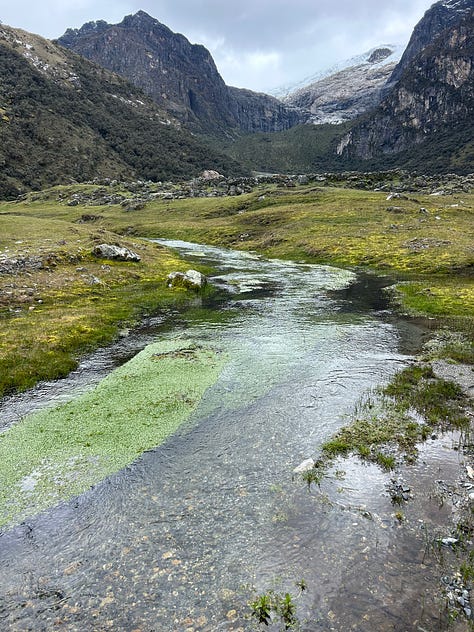
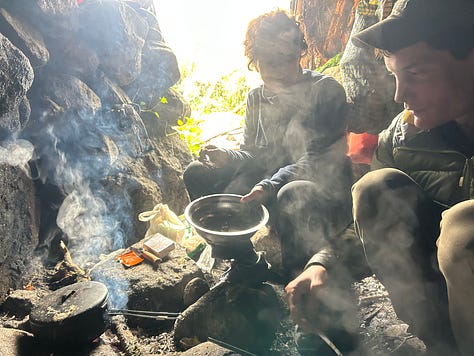

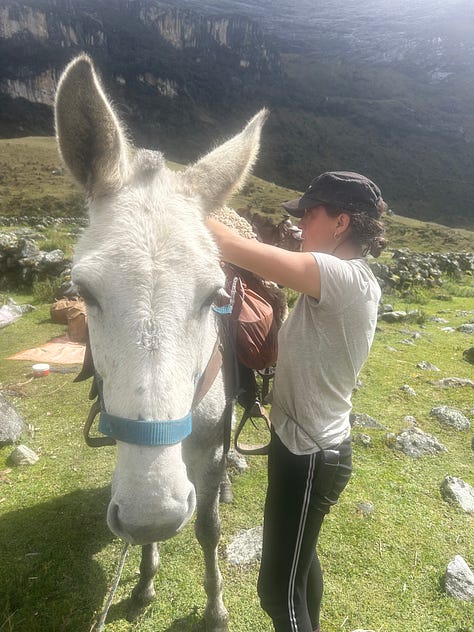
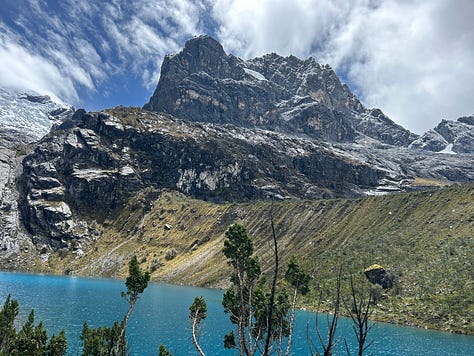
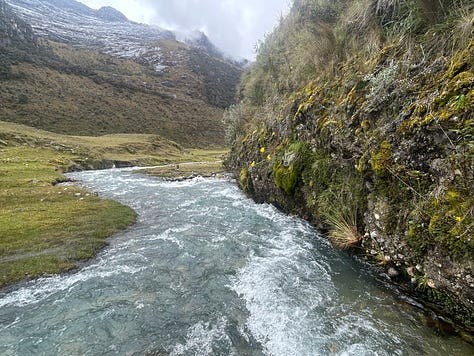

The eastern valleys of the Cordillera Blanca mountains of central Peru, are awash with mud in the rainy season, the Lonely Planet guide warned us. ‘Out of bounds to even the hardiest back packers’. But here we were, my son Máté and his girlfriend Eleanora, my wife Andrea and I, riding and walking through the rain, ducking to dodge the low hanging branches of the queuña trees, through altitudes which hurt your brain and steal your breath away until you get used to them.
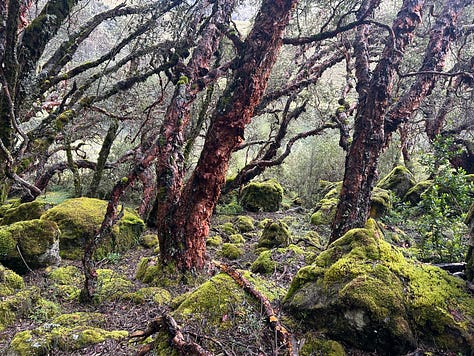





After a rest day, surrounded by inquisitive donkeys, we rode up to Milpa lake, where Máté caught rainbow trout for supper, and we sat at the foot of a massive waterfall in a grove of queuña trees, sheltering from the rain. How we enjoyed the silence of the phone! No longer a dictatorial communication toy, stealing our attention by day and night, just an excellent camera, and occasionally, a way of telling the time or altitude, as if such random numbers matter. Meanwhile the mountains, the waterfalls, the last glaciers towered over us, like planetary aunts and uncles, and woe betide anyone who doesn’t show them the necessary respect.
After a few days in the last hut, or chosa, at the top of the valley, we meet Andres and Paulina, a shepherd couple, both in their 90s, who spend three weeks of every four up here, looking after 150 sheep. They cover the mountainsides at speeds that put my sluggish, English legs and lungs to shame. When Andres gestures, he points with his long stick, as though it had a telescopic lens. They regret the new road planned up through the valley, they say. They miss the ice on the melting glaciers. They offer advice on where to catch the best fish. And compliment the chocolate pancake Máté has just rustled up on our fire, which we have just baptised ‘Crêpe Tarzan’ - elder brother to the ‘Crêpes Suzettes’ one might find in the elegant hostelries of faraway Paris, perhaps.
On our last day in the valley, we reach the furthest lagoon, right at the foot of what is left of the glacier. This is where Miguel, another shepherd, used to come to cut blocks of ice to sell in the village, when he was 18. Now he’s nearly 50, and the ice is long out of reach, leaving a line of slippery, hard-scrabble rock. By 2056, according to a recent report, there will be no glaciers at all left in the Peruvian Andes, on which some 20 million people depend for their drinking water.
The lake water hovers just above freezing point, like a humming bird. We strip naked and swim from one rock to the next, screaming like banshees. I don’t think I’ve ever felt so awake, or alive.

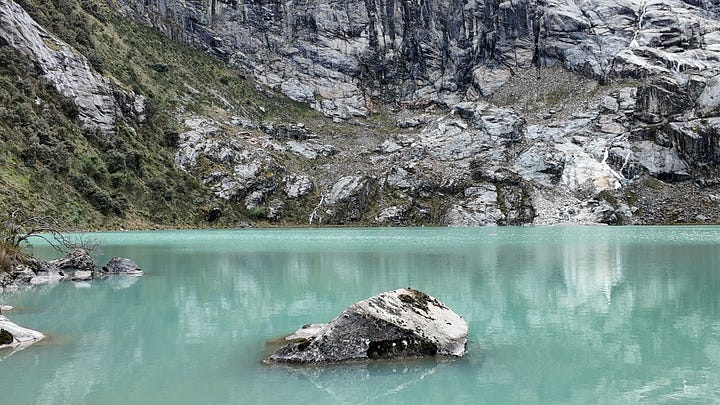


The mules wait for us patiently in the pasture, like broad-shouldered birds, ready to carry us back down into a world which values them less and less. Because it rarely looks up from its flat screens, into the still, wild depths of their eyes.






